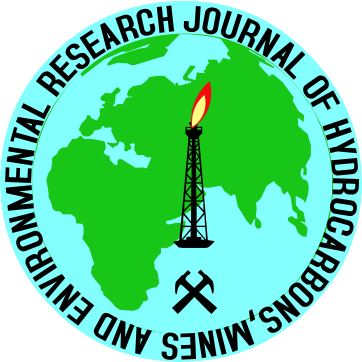JOURNAL OF HYDROCARBONS MINES
AND ENVIRONMENTAL RESEARCH
__________________
 |
©
Journal of Hydrocarbons Mines and Environmental Research, ISSN: 2107-6510,
Volume 2, Issue 2, December 2011, 119-129 __________________________________________________________________________________________________ |
Contribution de la gravimétrie à une
meilleure connaissance de l’aquifère profond du flanc nord des
Béni Snassen, Maroc nord-oriental
Radia El Gout 1,*, Driss Khattach 1,
Mohammed-Rachid Houari 1 and Olivier
Kaufmann 2
1 Laboratoire des Géosciences Appliquées (LGA),
et Centre de l’Oriental des Sciences et Technologies de l’Eau
(COSTE), Faculté des Sciences, Université Mohammed I, B.P. 717,
60000 Oujda, Morocco
2 Faculté Polytechnique de Mons, Service de Géologie fondamentale
et appliquée, 9, rue de Houdain, B-7000 Mons, Belgium
* Corresponding author: radia_elgout@yahoo.fr (R. El Gout)
Received: 20 September 2011 - Accepted: 23
February 2012 - Available online: 24 February 2012
Résumé: Dans
le but d’améliorer la connaissance de la structure de l’aquifère
profond du flanc nord des Béni Snassen, Maroc nord oriental, à
travers la mise en évidence des linéaments gravimétriques,
nous avons appliqué différentes techniques complémentaires
(gradient horizontal couplé au prolongement vers le haut, déconvolution
d’Euler et gradient vertical) à la carte gravimétrique
de la zone d’étude. L´analyse statistique des résultats
des filtrages gravimétriques a permis la mise en évidence de
quatre familles de failles d´orientation NS, NE-SW, ENE-WSW à
EW et NW-SE. Ces dernières ont toutes contribué, ensemble ou
séparément entre l´Hercynien et l´Alpin, à
la structuration de cette zone. Les failles de direction NE-SW à ENE-WSW
et NW-SE se sont avérées les plus profondes et peuvent atteindre
3000 m, tandis que les accidents NS sont superficiels et leur profondeur ne
dépasse pas 1000 m.
Ces résultats ont permis de (i) confirmer certaines failles déjà
reconnues ou supposées par les études structurales en précisant
leurs tracés et leurs pendages et (ii) mettre en évidence un
grand nombre de nouveaux accidents profonds ou superficiels. Dans une autre
approche, l’interprétation conjointe des résultats des
filtrages gravimétriques et ceux issus des forages, a permis d’identifier
la structure du système aquifère liasique du flanc nord des
Béni Snassen. Il est compartimenté par des failles. Suite à
cette configuration en bloc de l’aquifère, l’écoulement
hydrodynamique de la nappe pourrait être discontinu à cause des
importantes pertes de charge entre blocs voisins à la faveur notamment
des failles conductrices.
Mots clés: Flanc nord des
Béni Snassen, aquifère profond, structure, gravimétrie,
filtrages gravimétriques, linéaments.
Contribution of gravity to the study of the deep aquifer of the northern flank
of Beni Snassen, northeastern Morocco
Abstract: To improve the
knowledge of the structural context of the deep aquifer of the northern flank
of Beni Snassen, different filtering techniques such as horizontal gradient,
upward continuation and Euler deconvolution were used to map structural lineaments
in study area. The obtained structural map is consistent with many faults
already recognized or supposed by traditional structural studies, and highlights
new major accidents by specifying their layout and dips. The statistical analysis
of the various contacts interpreted as faults shows that the structure is
well outlined by a series of lineaments divided into four families of directions:
NS, NE-SW, ENE-WSW to EW and NW-SE. The Euler solutions indicate that the
NE– SW to ENE–WSW and NW–SE trends characterize the deepest
structure setting of area. Their depth can reach 3000 m while the depth of
the NS accidents does not exceed 1000 m.
The results confirm the existence of faults already recognized or supposed
by the traditional structural studies and highlight new major accidents by
specifying their layout and dips. In a second approach, the joint interpretation
of the results of gravimetric filtering and those resulting from the direct
methods (hydrogeological boreholes), made it possible to identify the structure
of the Jurassic aquifer system of the northern side of Beni Snassen. This
reveals that the aquifer system corresponds to a system compartmentalized
by faults. Considering this configuration in blocks of the aquifer, the hydrodynamic
flow of the groundwater could be discontinuous because of the important losses
between blocks in favour to conducting faults.
Keywords: Beni Snassen belt, gravity, filtering
techniques, lineaments, structure, Jurassic aquifer.